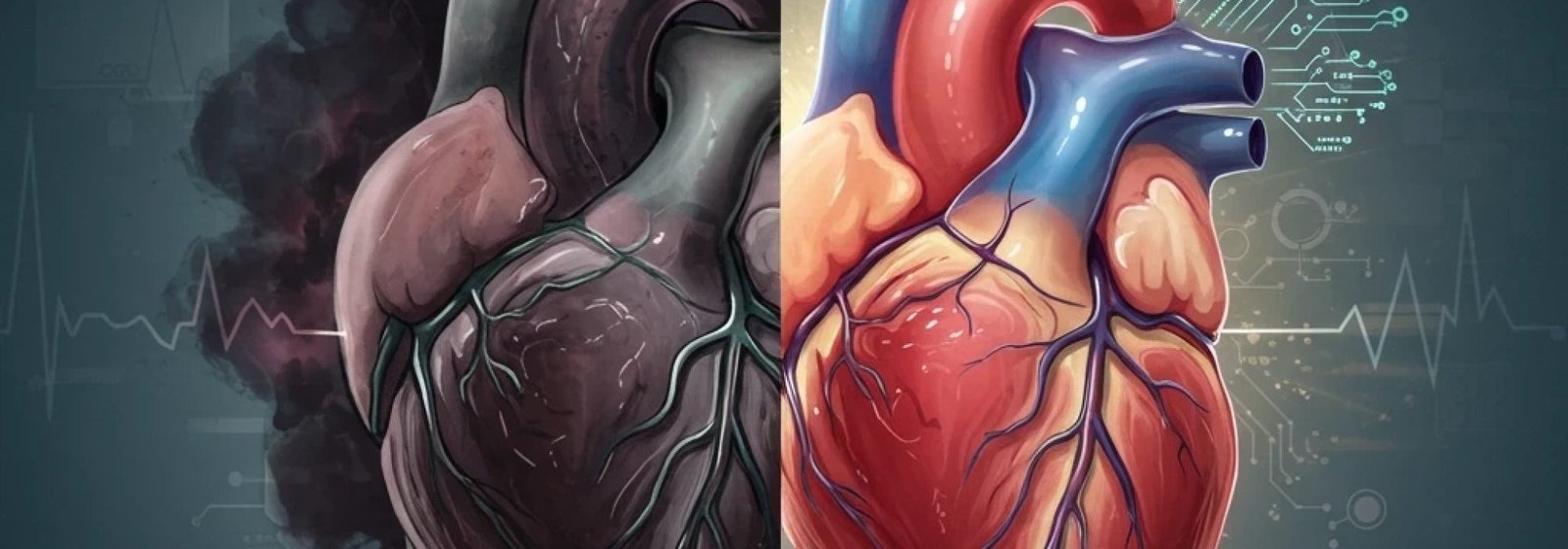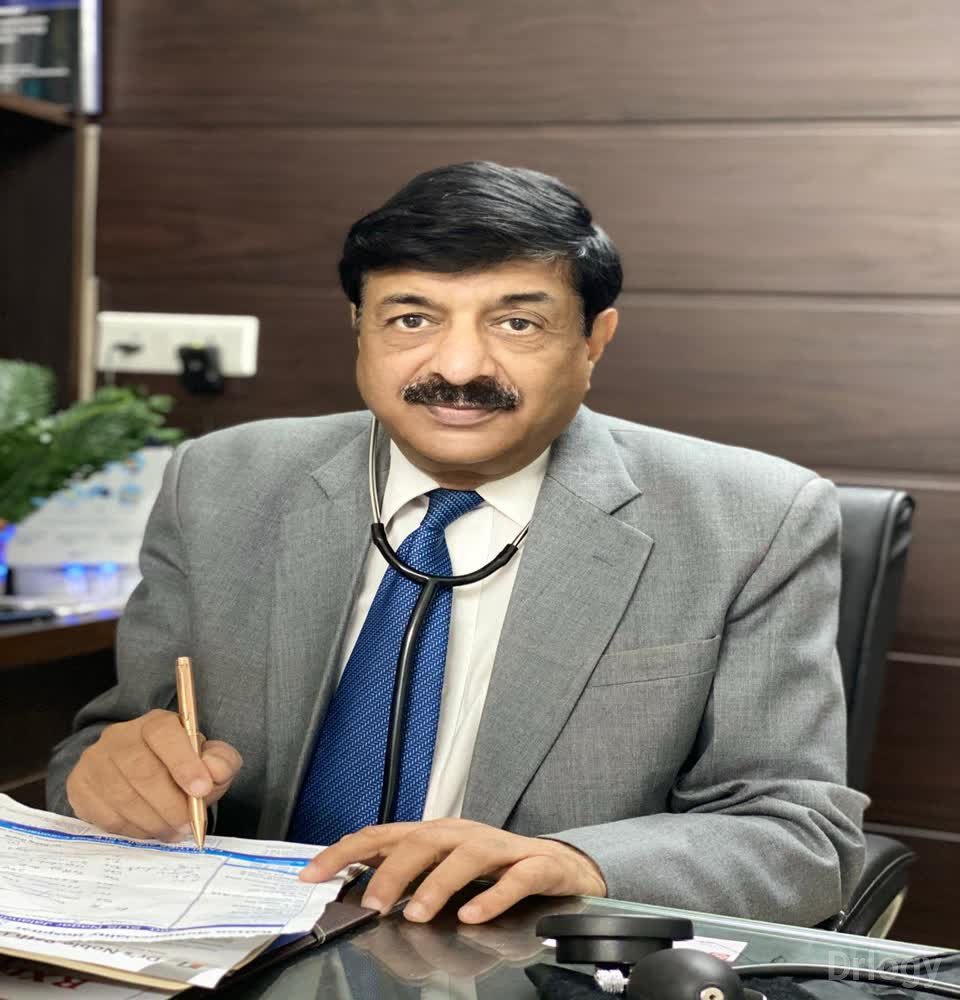ENHANCED EXTERNAL COUNTERPULSATION (EECP)
Recover Your Heart Health — Safely and Comfortably.


Message from Cardiologist
As a cardiologist, I am pleased to share that ECP (External Counter Pulsation) / EECP (Enhanced External Counter Pulsation) is a safe, non-invasive therapy designed to improve blood flow to the heart. It is particularly effective for patients with angina or heart failure who are not candidates for surgery or those seeking alternative treatments.
This advanced therapy works by enhancing circulation, promoting the development of new blood vessels, and improving overall heart function. ECP / EECP not only reduces symptoms like chest pain and fatigue but also enhances quality of life.
If you or your loved ones are experiencing heart-related concerns, feel free to consult with us to understand how ECP / EECP can benefit you. Our top priority is the wellness of your heart.
Stay healthy, stay informed.
What is ECP / EECP ?
External Counterpulsation (ECP) / Enhanced External Counterpulsation (EECP) is a non-invasive therapy designed to improve blood flow in patients with certain heart conditions, such as chronic angina and heart failure. This treatment is especially beneficial for individuals who experience chest pain or reduced blood flow to the heart and may not be eligible for invasive procedures like angioplasty or bypass surgery. During ECP / EECP therapy, patients lie on a specialized table with inflatable cuffs around their calves, thighs, and buttocks. These cuffs inflate and deflate in sync with the heartbeat, pushing blood toward the heart when it’s at rest and easing blood flow when the heart pumps. This cycle helps enhance circulation, reduces the heart’s workload, and promotes the development of new blood vessels around blocked arteries. The outcome is often a significant reduction in symptoms, including chest pain, as well as an improvement in physical endurance and overall quality of life.
ECP / EECP sessions are typically an hour long and are scheduled over several weeks, allowing patients to gradually experience relief without the risks associated with surgery. The treatment is widely regarded as safe and effective, especially for high-risk patients or those unable to undergo surgery. By offering a comfortable, non-invasive approach to managing cardiovascular disease, ECP / EECP has become a valuable option in modern cardiology, helping patients achieve symptom relief and better heart health without incisions or recovery time.









Research and promoted ECP / EECP by DR. A.P.J. Abdul Kalam
A.P.J. Abdul Kalam, the former President of India and a renowned scientist, was a strong advocate for External Counterpulsation (ECP) / Enhanced External Counterpulsation (EECP) therapy. His interest in ECP / EECP stemmed from his commitment to improving healthcare access and outcomes for people in India, particularly in underserved areas. DR. Kalam saw ECP / EECP as an innovative, non-invasive, and cost-effective approach for managing cardiovascular diseases, especially for patients who might not have access to advanced surgical treatments.
DR. Kalam’s Role in Promoting ECP / EECP in India
Advocacy for Non-Invasive Solutions: Kalam was an advocate for non-invasive medical technologies, seeing them as a way to make healthcare more accessible and affordable for India’s large population. ECP / EECP fit well within his vision, as it offered a non-surgical solution to chronic heart conditions, especially for patients who were not eligible for procedures like angioplasty or bypass surgery.
Collaboration with Healthcare Institutions: Kalam collaborated with healthcare institutions and organizations across India to promote ECP / EECP. He was instrumental in bringing awareness about ECP / EECP to the public, medical professionals, and policymakers. This led to increased adoption of the therapy in hospitals and clinics, particularly as an alternative treatment for patients who could not afford or access invasive cardiac care.
Endorsement of ECP / EECP Research: Kalam supported research on EECP’s effectiveness in treating cardiovascular diseases. He encouraged Indian researchers and medical practitioners to study and publish findings on ECP / EECP to establish its benefits further and validate its use as a mainstream therapy. His endorsement brought credibility to ECP / EECP, making it more widely accepted in India.
Patient Empowerment and Preventive Care: Kalam believed in the importance of preventive healthcare and patient empowerment. He saw ECP / EECP as a way for patients to manage chronic heart conditions without resorting to invasive procedures. By promoting ECP / EECP, he encouraged patients to explore treatment options that could enhance their quality of life while minimizing risks.
Vision for Cost-Effective Healthcare: Given India’s economic diversity, DR. Kalam focused on cost-effective healthcare solutions. He saw ECP / EECP as a valuable alternative that could reduce healthcare costs for both patients and the healthcare system. By reducing the need for surgeries, hospital stays, and lengthy recoveries, ECP / EECP represented a way to make heart disease management more affordable.
Creating Awareness Among Cardiologists and the Public: DR. Kalam’s influence was instrumental in raising awareness about ECP / EECP among Indian cardiologists and the general public. His endorsement helped shift perceptions, encouraging cardiologists to consider ECP / EECP as a legitimate option for managing heart disease, and patients to view it as a reliable non-invasive treatment.
Who Is Eligible for ECP / EECP Treatment?
External Counterpulsation (ECP) / Enhanced External Counterpulsation (EECP) is suitable for a variety of patients with specific cardiovascular conditions. However, eligibility for ECP/ EECP treatment is determined based on a comprehensive assessment by a healthcare provider. Here are the primary groups of patients who may be eligible for ECP / EECP:
Patients with Chronic Stable Angina: Individuals experiencing chronic stable angina who do not have adequate relief from medications or lifestyle changes may benefit from ECP / EECP. This includes patients whose angina symptoms persist despite optimal medical therapy.
Patients with Heart Failure: ECP / EECP can be beneficial for patients diagnosed with heart failure, particularly those with reduced exercise tolerance and symptoms related to insufficient blood flow to the heart.
Patients Unfit for Surgery: Individuals who are not candidates for invasive procedures such as angioplasty or coronary artery bypass grafting (CABG) due to high surgical risk, age, or comorbid conditions may consider ECP / EECP as a non-invasive alternative.
Patients with Peripheral Artery Disease: Some studies suggest that ECP / EECP may also help patients with peripheral artery disease (PAD) by improving blood circulation in the lower extremities, although this use is still being researched.
Individuals Seeking Non-Invasive Treatment Options: Patients who prefer to avoid invasive interventions and are looking for complementary therapies to manage their cardiovascular conditions may find ECP / EECP appealing.
Patients with Uncontrolled Angina Symptoms: Those with severe angina symptoms that limit daily activities and have not responded well to traditional treatments may qualify for ECP / EECP.
Evaluation Process
Before starting ECP / EECP treatment, patients undergo a thorough evaluation that typically includes:
Medical History Review: Understanding the patient’s heart condition, symptoms, and treatment history.
Physical Examination: Assessing overall health and any comorbid conditions.
Diagnostic Tests: Tests such as electrocardiograms (ECGs), echocardiograms, or stress tests may be performed to evaluate heart function and determine the severity of the condition.
Rattan Hospital
“At Rattan Hospital, we are dedicated to delivering compassionate care, advanced treatments, and quick support for all your healthcare needs. With a patient-first approach and state-of-the-art facilities, we strive to ensure your health and well-being are always in trusted hands.”
Experience
Our dedicated team of healthcare professionals is committed to delivering exceptional care.
Quick Support
Count on us for fast, efficient, and compassionate care whenever you need it.
ECP / EECP advantage over bypass Surgery & Angioplasty
External Counterpulation (ECP) / Enhanced External Counterpulsation (EECP) offers several advantages over traditional interventions such as bypass surgery and angioplasty, particularly for patients with chronic angina or heart failure. Here are the key benefits of ECP / EECP compared to these invasive procedures:
Non-Invasive Procedure
ECP / EECP: It is a non-invasive therapy that does not require any surgical incisions, anesthesia, or hospitalization. Patients can undergo treatment on an outpatient basis.
Bypass Surgery and Angioplasty: Both procedures are invasive, requiring surgery, anesthesia, and longer recovery times.
Lower Risk of Complications
ECP / EECP: The risks associated with ECP / EECP are minimal, making it a safer option for patients, particularly those with comorbidities or those who are at a higher risk for surgical complications.
Bypass Surgery and Angioplasty: These procedures carry risks such as bleeding, infection, heart attack, stroke, and other complications associated with surgery and anesthesia.
Reduced Recovery Time
ECP / EECP: Patients typically experience no downtime after treatment and can resume their normal activities immediately following each session.
Bypass Surgery and Angioplasty: Recovery times can vary significantly; patients may need several days to weeks to recover fully after surgery or an angioplasty, limiting their activities during this period.
Cost-Effectiveness
ECP / EECP: Generally, ECP / EECP is more cost-effective compared to the expenses associated with surgery, including hospitalization and post-operative care. It can potentially reduce overall healthcare costs by decreasing the need for medications, hospitalizations, or other invasive treatments.
Bypass Surgery and Angioplasty: These procedures can be significantly more expensive due to hospital stays, surgical costs, and rehabilitation.
Improved Quality of Life
ECP / EECP: Many patients report significant improvement in their quality of life, including reduced angina symptoms and increased exercise tolerance, with less stress on their heart.
Bypass Surgery and Angioplasty: While these procedures can also improve quality of life, some patients may experience complications or ongoing symptoms post-procedure.










